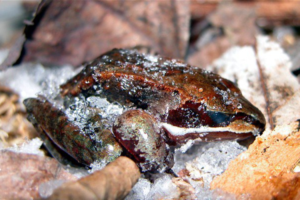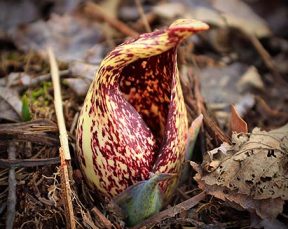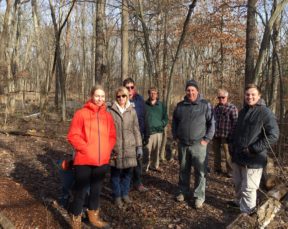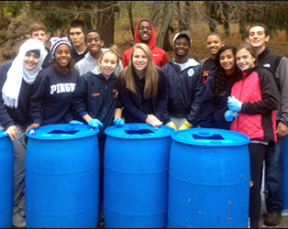By Adam Palmer, GSWA Education Associate
Although it may be wintertime and it doesn’t look like much activity abounds in our wild spaces, our Conservation Management Area (CMA) is still a happening place throughout January and February! Read along to learn more about the things you may see that are taking place right now in the swamp.
The two biggest challenges our resident swamp critters face are the cold and a lack of resources (food). Even though we’ve had some very warm days this winter, there have still been evenings and nights where temperatures dropped to below freezing.

This frozen wood frog is very much alive
Many of the animals who remain here for the winter have adapted specific techniques to successfully endure these tough conditions. The wood frog (Lithobates sylvaticus) is one of the more unique species. Like other northern frog species, the wood frog is cold tolerant, meaning it can survive lower temperatures brought about by a chilly frost. However, it is the only species which can survive most of its body being frozen solid for prolonged periods of time. It does this with the help of two compounds, a sugar (glucose) and an amide (urea). Shortly before winter arrives, the frog accumulates large quantities of these two compounds, which act as chemical protectant against ice formation in the frog’s cells. When cold conditions occur, the frog can pump these compounds into its cells and inhibit the formation of ice crystals which would rupture and damage as they expand. This allows them to freeze, and re-freeze numerous times over the course of a winter, until warmer conditions arise in the spring.
If the cold doesn’t get you, lack of food will! Resident birds are still flying and flitting across the meadows. You may catch the fleeting glimpse of a goldfinch while walking as the large flocks search and feed on the seeds of plants in our meadow. These invaluable reservoirs of seed are vital for non-migratory birds, as other sources of food disappear over winter. On the same topic of small birds and food sources, great horned owls will also begin nesting in February. Come for an evening walk or to one of our night hike programs and you might be lucky enough to hear them calling! You can check out all our upcoming events here.
Please click here for information and facts about the animals and plants of the CMA on a month-by-month basis, written by volunteer and naturalist Blaine Rothauser.



